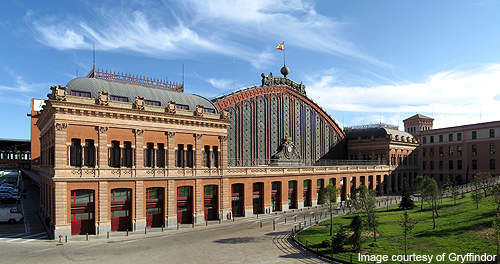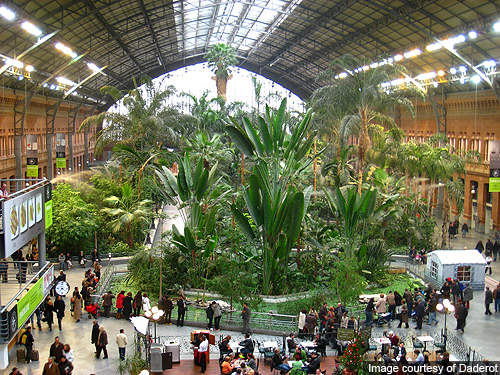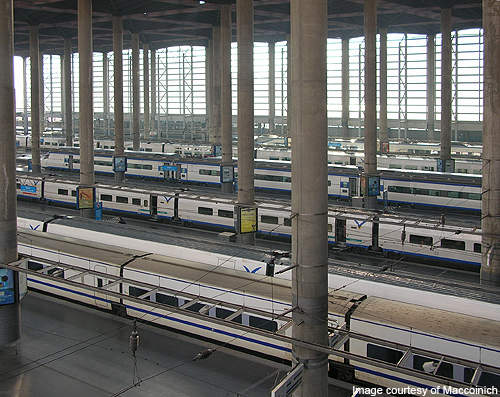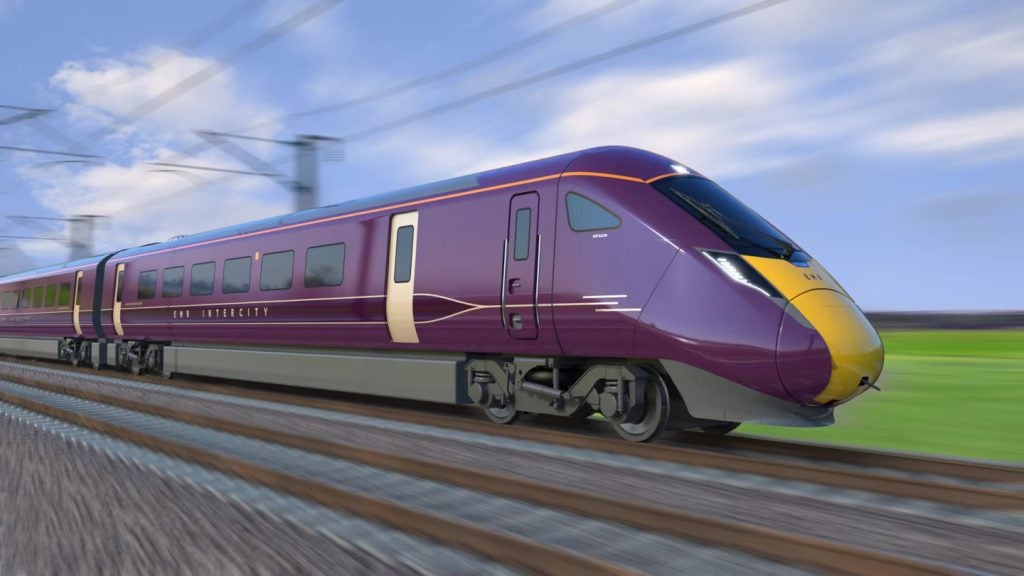The Atocha Railway Station is the first to be built in Madrid. Located in the district of Prado near the centre of Madrid, it serves as the main station for commuter trains (Cercanías), intercity, regional trains from the south and the AVE high speed trains from Barcelona (Catalonia) and Seville (Andalusia). These train services are operated by the state-owned railway company Renfe Operadora.
Atocha is the largest station in Spain and is commonly known as Madrid Puerta de Atocha.
The station is named after the Royal Basilica of our lady of Atocha or the Real Basilicade Nuestra Señora de Atocha in central Madrid, which is located in the neighbourhood.
The station complex was jointly built by Madrid Atocha Cercanías, Madrid Puerta de Atocha station and the Atocha Renfe station of Madrid. It includes a botanical garden spread over an area of 4,000m². The station currently operates at 80% capacity.
Atocha project
The Atocha station was originally opened in 1851 when the second railroad connected Madrid with Aranjuez, 47km away from Madrid. It was then known as Estación de Mediodia. It was rebuilt in 1892, after a large part of the station was destroyed by fire. The old building was redesigned by the Spanish architects Alberto de Palacio Elissagne and Gustave Eiffel. It was engineered by Henry Saint James.
The platform roofs, in form of an inverted hull, are partially covered and are made up of steel and glass. They are 27m high and 157m long spread between the brick flanking buildings.
The station was expanded in 1985 to incorporate additional tracks. The original building was converted into a commercial complex with a tropical garden, cafés and night clubs in 1992. The main tracks from the old terminal were shifted to the new terminal, which is adjacent to the AVE high speed rail, while the underground platforms serve commuter trains. This expansion was designed by Spanish architect José Rafael Moneo Vallés.
Infrastructure
The station façade faces the Plaza Del Emperador Carlos V square. The streets that intersect at the square are Calle de Atocha, Paseo del Prado, Paseo de la Infanta Isabel, Avenida de la Ciudad de Barcelona, Calle de Méndez Ãlvaro, Paseo de las Delicias, Paseo de Santa María de la Cabeza, and Ronda de Atocha. They provide easy access from the station to south Madrid.
The station is served by Madrid Metro stations -Atocha and Atocha Renfe, which is also a part of the main station. The latter station was constructed along with the new terminal building and is directly linked to it.
Entrance to the train bays is located in the first floor. The long distance trains can be boarded from the second floor of the station.
The check-in and boarding procedures are similar to those in airports.
The station lounge is spacious and has information counters managed by English-speaking attendants.
The departure and other display boards are in both Spanish and English.
In October 2009, the European Investment Bank agreed to provide €5bn to develop high-speed rail networks in Spain. Expansion of the Madrid Atocha Station is one of the projects covered in the agreement. Also, a high-speed tunnel will be built between the Atocha and the Chamartin stations.
Atocha station memorial
A series of bomb blasts took place in the trains as well as near the station on 11 March 2004, a day also known as 11-M. About 190 people were killed and 1,775 wounded. The Atocha Station Memorial was built in the memory of these victims.
The memorial is a cylindrical structure built at the location where the four trains that were attacked. It stands 36ft high and is composed of glass blocks. The cylinder is illuminated by lights within the base, which is visible throughout the station. The messages of grief can be seen from a chamber underneath the monument.










